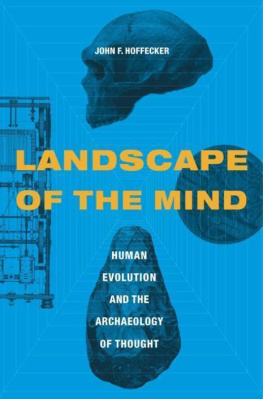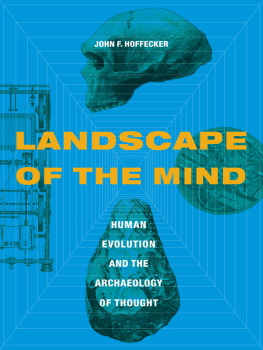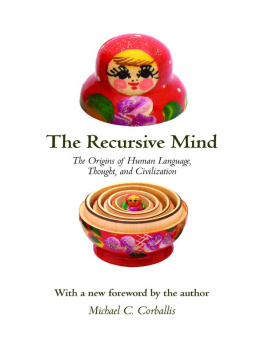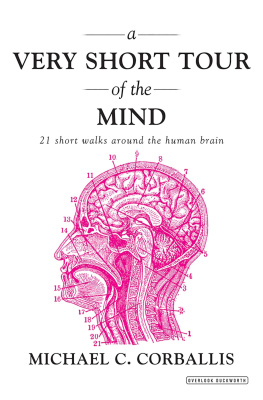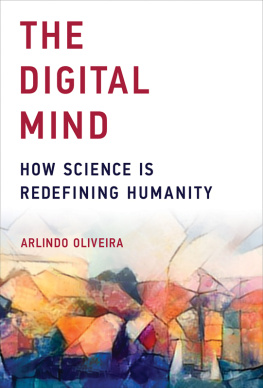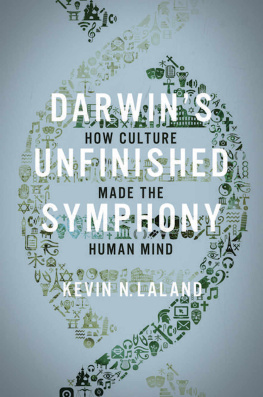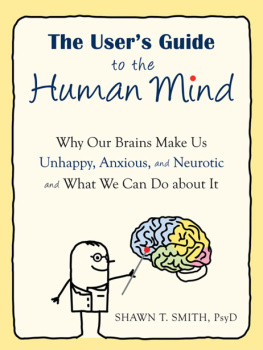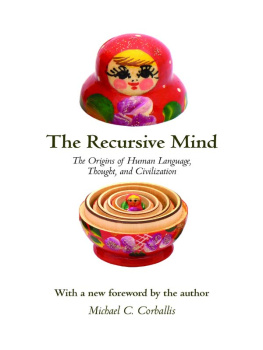JOHN F. HOFFECKER


TO THE MAN AND HIS WORK V. GORDON CHILDE (1892-1957)
Contents
PREFACE AND ACKNOWLEDGMENTS IX
Modernity and Infinity 1
2 Daydreams of the Lower Paleolithic 33
3 Modern Humans and the Super-Brain 73
4 The Upper Paleolithic as History 104
5 Mindscapes of the Postglacial Epoch 138
6 The Vision Animal 169
NOTES 179
BIBLIOGRAPHY 221
INDEX 245
PREFACE AND ACKNOWLEDGMENTS
ALTHOUGH READERS NEED NOT concern themselves with the particulars, death was very much on my mind as I wrote Landscape of the Mind. More to the point, the bitter gulf that lies between the death of a person as a biological organism and the potential immortality of his or her thoughts was on my mind. It reflects a conviction that "the mind" is an entity that transcends both biological space (that is, an individual brain) and biological time. Another conviction is that we-I refer to not only archaeologists, but also students of other disciplines-have been studying something important that remains only vaguely defined.
If the ultimate source of the mind is the individual brain-an unmistakable product of evolutionary biology-something has emerged with the mind, something that involves properties not found elsewhere in the biological realm. Some refer to them as emergent properties and attribute them to the almost unimaginable complexity of the system they represent. It is a system much greater than the estimated 1 million billion synaptic connections in an individual brain (itself described as the most complex object in the known universe). At some point in human evolution, probably not very long ago, humans evolved the capacity for transmitting thoughts from one brain to others by means of externalized symbols. This created a "super-brain" within each social group and probably marked the advent of both the mind and what many of niy colleagues in archaeology refer to as modernity.
The characteristic of the mind most important to our lives is creativitythe capacity for the seemingly limitless recombination of thoughts expressed as words or artifacts into hierarchically organized structures with no prior existence. The first bow and arrow is one example, and Catcher in the Rye is another. The advent of creativity changed everything. It brought forth onto the Earth something new, analogous to the origin of life itself. The creative mind has been developing and accumulating these structures ever since. One of the consequences is that most of us spend most of our time in a landscape shaped largely by structures of the mind, not by the processes of geomorphology or evolutionary biology.
Another conviction that readers will find expressed in this book is that archaeology can contribute to an understanding of the mind, including its origin. Although much of archaeological method may seem rather simple and antiquated, the data of the archaeological record is largely a trail of fossil thought. This is a consequence of the ability, very rare among living organisms (the honeybee being an example), to project mental representations outside the brain, which was something accomplished initially with the hands and later with the vocal tract. A central theme of this book is that by reaching out to touch and eventually alter their own thoughts, evolving humans made the mind.
As I wrote this book, I was acutely conscious of how the creativity of others-many of then no longer living-had provided much of the structure of thought contained here. The thoughts of V. Gordon Childe (1892-1957) about archaeology and history are fundamental, as are the ideas of R. G. Collingwood (1889-1943), who was an influence on Childe. Some major ideas that readers will find in this book about the relationship between humans and their artifacts were articulated by Andre Leroi-Gourhan (1911-1986) several decades ago, although most English-speaking archaeologists are unaware of his contribution in this realm. Noam Chomsky's ideas about language-especially those of the past two decades-are an essential foundation. Much of what I have written about the evolution and spread of modern humans is based on the work of Richard G. Klein.
My parents, John Savin and Felicity Hoffecker, nurtured my interest in archaeology and history from an early age. My father was especially interested in Collingwood's work and often spoke about it, along with that of Benedetto Croce (1856-1952), who was, in turn, an influence on Colling wood. Many of the illustrations were done by Ian Torao Hoffecker. They are all part of this book.
A number of people read and commented on specific chapters of the book, and I am grateful for their time and thoughts. Colleagues and friends who read the critically important (and heavily revised) first chapter include Jolanta M. Grajski, Nancy R. Lyons, Marina Petrova, and Shelly Sommer. The first chapter also reflects fruitful discussions with Bob Levin and Valerie E. Stone.
My colleagues in archaeology at the University of Colorado in Boulder reviewed chapter 4 in the congenial setting of our monthly luncheon, and I would like to thank Cathy Cameron, Art Joyce, Steve Lekson, Paola Villa, and Richard Wilshusen for their thoughts and continents. Three anonymous reviewers for Columbia University Press plowed through the complete draft, and their comments and criticisms were very helpful.
I am especially grateful to the staff at Columbia University Press. Patrick Fitzgerald, Publisher for the Life Sciences, embraced this project with enthusiasm at the outset and remained an important source of guidance and encouragement throughout the two and half years that I labored on the draft. The entire manuscript was edited by Irene Pavitt. Editorial assistant Bridget Flannery-McCoy and her predecessor, Marina Petrova, also were very helpful.
1 Modernity and Infinity
[T]he mind is in its own nature immortal.
RENE DESCARTES
TOWARD THE END OF HIS MEMOIR, Vladimir Nabokov expressed his frustration at "having developed an infinity of sensation and thought within a finite existence."1 It was a theme he had turned to in the last lines of Lolita: "I am thinking of aurochs and angels, the secret of durable pigments, prophetic sonnets, the refuge of art. And this is the only immortality you and I may share."'-- Nabokov died in 1977 and-like all other forms of organic life-relinquished his conscious sensation of being. But many of his thoughts continue to exist, as they do on this page, and in this way Nabokov transcended his finite existence.
It is a power that almost all humans possess-to transcend their existence as organic beings by communicating thoughts that will endure after they die. The ideas of an individual may be communicated in writing or print or electronic media and, before the invention of writing, by oral tradition. In this way, the seemingly ephemeral thoughts that flow through the brain may endure for centuries or more.

